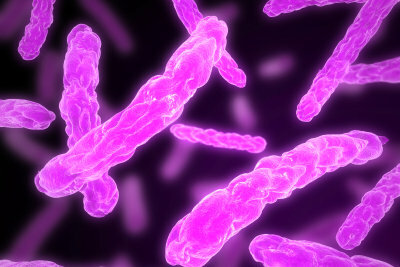Biomedical disease model simply explained
Have you often asked yourself why one person gets sick and the other doesn't? These phenomena try to explain disease models. A biomedical model of disease is one of them, the salutogenic model is another. Find out in this guide what is hidden behind these seemingly complicated terms.

A biomedical health model
There are different models that researchers and scientists use to explain why a disease develops.
- A biomedical disease model assumes that Diseases can only arise when functions of the body are disturbed.
- Such disorders can be proven biochemically or physically.
- You probably can't think of anything by biochemistry. The term refers to the subject area that deals with the metabolism in the body busy by living things.
- In terms of the biomedical disease model, it means that the researchers can demonstrate in the laboratory why you are sick. Perhaps your molecules have changed in the course of the illness, enzymes can be detected, hormones are being released more frequently or other changes are noticeable. A biomedical disease model requires this type of evidence.
- Physics also play a big role in this health model. In this natural science, states or processes in atoms, molecules and tissues are observed in relation to diseases without the substance itself changing.
- If you summarize these two points, you will see that the biochemical disease model deals almost exclusively with the rational development factors.
- This model is therefore currently being criticized by naturopathic doctors and naturopaths because the psyche and the social environment are not taken into account.
The tasks of the health system are very clearly defined. It's not just about ...
Understand the salutogenic disease model
A biomedical disease model focuses on disease, the salutogenic model on health.
- You can already see that there is a fundamentally different view of people here.
- Aaron Antonovsky, who developed this disease model, was fascinated by the fact that some people do not get sick even in difficult situations, while others even die.
- You have certainly already had this experience in yourself or in those around you. Someone drinks, smokes, has an obviously unhealthy diet and apparently does everything else that could be harmful to health, but still reaches an old age.
- To be able to explain something like this, the researcher had numerous conversations with people and realized that those who stay healthy often have a certain attitude towards life. This is how people understand what is happening in their life and can deal with it in a healthy way. Change is not seen as a burden, but as a challenge.
In summary, a biomedical disease model searches for the verifiable cause of disease; the salutogenic model explains health based on the attitude towards life.
How helpful do you find this article?
The content of the pages of www.helpster.de was created with the greatest care and to the best of our knowledge and belief. However, no guarantee can be given for the correctness and completeness. For this reason, any liability for possible damage in connection with the use of the information offered is excluded. Information and articles must under no circumstances be viewed as a substitute for professional advice and / or treatment by trained and recognized doctors. The content of www.helpster.de cannot and must not be used to make independent diagnoses or to start treatments.


